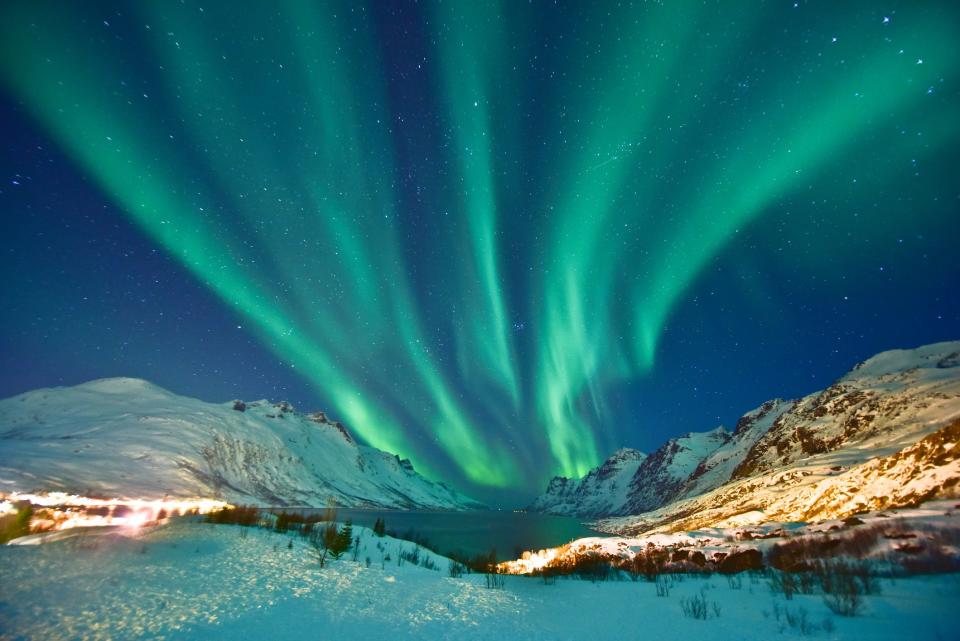Northern lights Thursday? Auroras could be visible across northern US
The sky could bring an early holiday gift for some lucky stargazers Thursday night: A visit from the aurora borealis.
"Aurora chasers are on high alert for some potentially very impressive displays," said Space.com.
According to the Space Weather Prediction Center, auroras, also known as the northern lights, could be possible as far south as Illinois and Oregon. AccuWeather also predicts a good show, saying that auroras could be visible in "up to a dozen states ... as far south as Pennsylvania, Missouri, Colorado and northern California."
More: It looks like the northern lights, but it's something different. It's called 'STEVE.'

After a powerful solar flare, solar storms incoming and G3 watch issued
If it appears, the aurora will be courtesy of a powerful solar flare, which erupted from the sun Tuesday and sparked a series of solar disturbances that are headed toward the Earth. Those disturbances are forecast to produce geomagnetic storms.
The Space Weather Prediction Center has issued a "G3" or "strong" geomagnetic storm watch for the Earth. The scale goes from G1 (minor) to G5 (extreme).
The solar disturbances are "coronal mass ejections," which NASA describes as "clouds of electrified, magnetic gas ejected from the sun and hurled into space with speeds ranging from 12 to 1,250 miles per second." A series of coronal mass ejections (CMEs) are headed toward Earth, the prediction center said, with the final one being strong enough to "cannibalize" the other ones.
What are 'cannibal' CMEs?
"Cannibal CMEs form when a fast CME sweeps up a slower CME ahead of it," SpaceWeather.com said. "The combination contains intense, tangled magnetic fields that can do a good job sparking auroras when they reach Earth."
In addition to the aurora, in a worst-case scenario, which is not predicted in the current forecast, strong geomagnetic storms can interfere with the electrical grid, degrade GPS signals, increase orbital drag on satellites, and pose radiation hazards to airline crews and astronauts, the prediction center said.
Aurora lovers, rejoice.: 2024 could be a great year for northern lights, due to solar maximum
Tips for viewing the northern lights
"Go out at night," NOAA said. "And get away from city lights. The moon will also diminish the apparent brightness of the aurora."
The best aurora is usually within an hour or two of midnight (between 10:00 p.m. and 2:00 a.m. local time). These hours expand towards evening and morning as the level of geomagnetic activity increases.
Aurora lovers, 2024 might be your year
The solar forces that produce the gorgeous sky phenomena are predicted to peak next year, and at a more intense level than previously thought, forecasters from the Space Weather Prediction Center said in October.
"Solar activity will increase more quickly and peak at a higher level than that predicted by an expert panel in December 2019," the prediction center said in a statement. "The updated prediction now calls for Solar Cycle 25 to peak between January and October of 2024."
Photo gallery: Beautiful photos of the northern lights
This article originally appeared on USA TODAY: Northern lights Thursday? Here's where auroras could be visible in US


